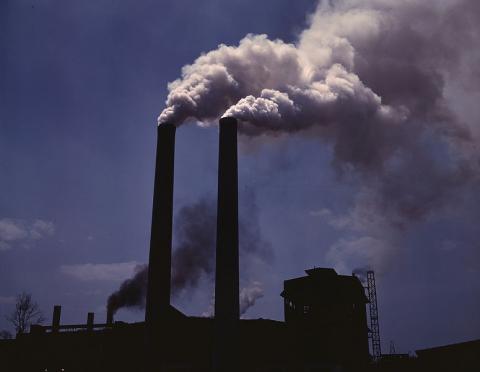Waste to Energy a Health Hazard?
- by Mark Martin, June 23, 2013. Source: Christian Broadcasting Network
Do you know where your trash goes? Landfills aren't the only option. Some goes toa plant, where it's burned for energy. But some believe that may not be such a good idea.
Like a giant claw, a huge crane slowly descends into a pit filled with tons of trash, or "municipal solide waste" as it's known in the industry. The refuse holding pit is located at the Energy/Resource Recovery Facility near Washington, D.C. It is Covanta Energy's largest "energy from waste" facility.
According to the Environmental Protection Agency, it's one of 86 plants that burns municipal solid waste to recover energy. The plant processes around 3,000 tons of municipal solid waste each day. Company leaders say that produces enough electricity for 80,000 homes.
"The first key to a very efficient and clean combustion process is mixing the waste well," Paul Gilman, chief sustainability officer of Covanta, explained. "So you can see and hear the cranes behind me mixing that waste and then slowly feeding it to the boilers that create the steam that then makes the electricity for those homes."
Toxic Waste?
However, for attorney Mike Ewall, co-director of Energy Justice Network, the process is definitely not clean.
"Incineration, first of all, is not waste to energy," Ewall told CBN News. "They like to call it that, but what it really is is waste turned into toxic ash and toxic air emissions."
"Incineration releases a lot of toxic metals like lead, mercury, arsenic, cadmium," he continued. "It releases dioxins and furans, which are the most toxic chemicals known to science, and these chemicals get into the food supply."
Leaders at Covanta maintain measures are in place to comply with EPA regulations and to protect people from harmful emissions.
"The emphasis on air pollution control equipment today and efficient recovery of the energy that's in your waste really has made it a remarkable source of renewable power," Gilman told CBN News.
Covanta leaders also say the ash produced from the combustion process is safely stored in a monofill with a liner that's designed to prevent the leaching of rain water into the soil.
"Is there fugitive ash from these monofills? Is there metal leaching out of that concrete as it sets up? And the answer to those questions in the long-term monitoring is no if you've done it right," Gilman said.
"And that's what we set out to do," he said. "That's what the local environmental agencies assure that we do. Then you don't have an issue with the ash, and you don't have an issue with air emissions associated with these facilities."
"I am not in any way concerned for my health for that monofill," Covanta facility manager Scott Drew told CBN News. "It's very well built; it follows strict guidelines from the local Department of Environmental Quality. I have no concerns for myself or my family and my three kids who live right in this community."
Skeptics Sound the Alarm
Mary Jane Reyes, who lives about eight miles from the Covanta facility, isn't convinced. She told CBN News she wants to raise awareness of the dangers associated with the combustion of municipal solid waste.
"When I saw that they had built homes so close, I saw children in the street playing, so it was just... they're all so innocent, and they're potentially going to have a lot of years not on their lives," Reyes said.
Ewall shares Reyes' concerns.
"I wouldn't want to live in a community where I have this many toxic chemicals coming out of an incinerator stack where the heavier pollutants will drop right on this community, and I'd be breathing them and where the landfill gas from a landfill right next door also would be affecting the community," Ewall said.
Bruce Pham's backyard is near a tree-lined ridge. Behind the ridge is the ash landfill.
"When I first moved in here it was a short-term thing, but if I were to live here long-term, it would concern me," Pham told CBN News. "Just the fact that being so close, we're not sure how much of it runs off... and to be honest, most of the biggest concerns is just the smell sometimes; it really can be odorous around here on certain mornings."
"They're odors because they're coming off of these facilities and have many other chemicals mixed in with them," Ewall said. "So some of them... some of those chemicals have odors; many of the other hundreds of chemicals mixed into these gases, you will never smell, but they will affect your health."
Despite the concerns of nearby residents, Drew denies odors are a problem.
"Combustion air comes through the tipping floor doors, comes under the pit wall and into the unit, always keeping the odor inside," Drew said. "In the 15 years that I've been here there has not been one single odor complaint from the facility."
Ewall's Energy Justice Network doesn't buy that claim.
"It's important that people organize to make sure that this incinerator is closed down," Ewall said. "Which from D.C., where I live, we'll be working to make sure that we stop sending waste here when the contract comes up in a couple of years and to make sure that the landfill stops operating as well because it shouldn't be this big and continue to expand this close to residents."

